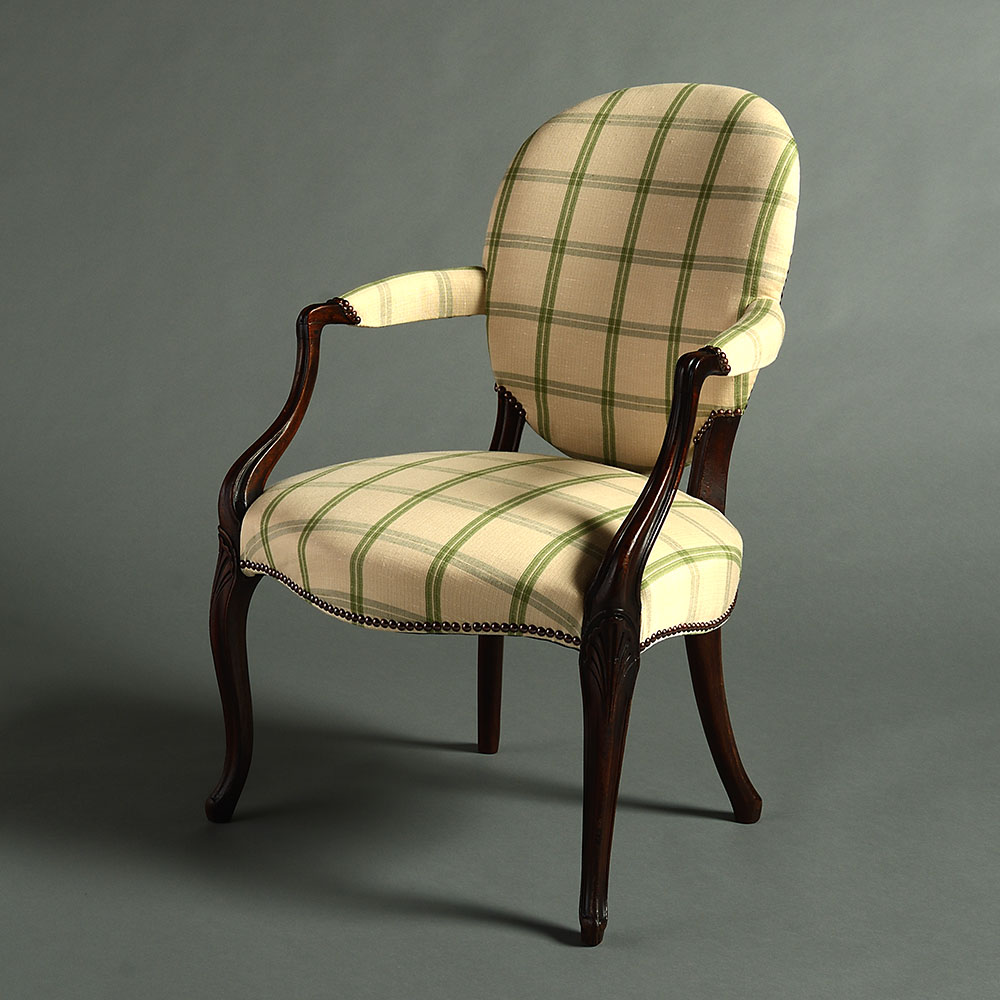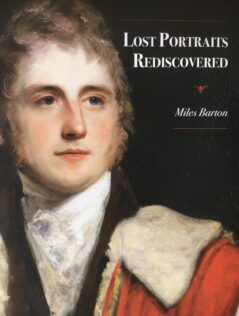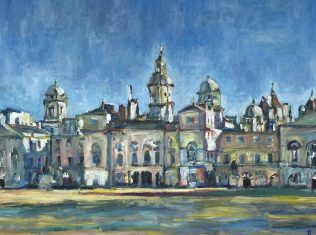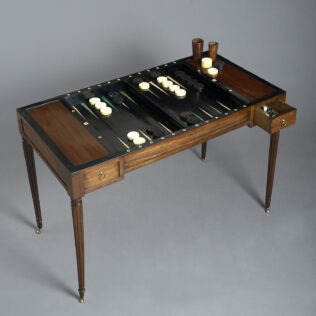Furniture
Hepplewhite Interiors: Featuring a George III French Hepplewhite Armchair
In comparison to other craftsmen of his type, little is known about George Hepplewhite (1727 – 1786); regardless of this, his name is still synonymous with light and elegant furniture of the late 18th century.
During the early-, to mid-18th century the British cabinetmaker and Georgian designer was apprentice to Robert Gillow of Lancaster. Following this, he returned to London to open a shop on Redcross Street. The scale of his business at this time remains unknown, but two years after his death his company (then run by his wife, Alice) published The Cabinet-Maker and Upholsterer’s Guide, featuring approximately 300 Hepplewhite & Co. designs of practical yet elegant Neoclassical forms.
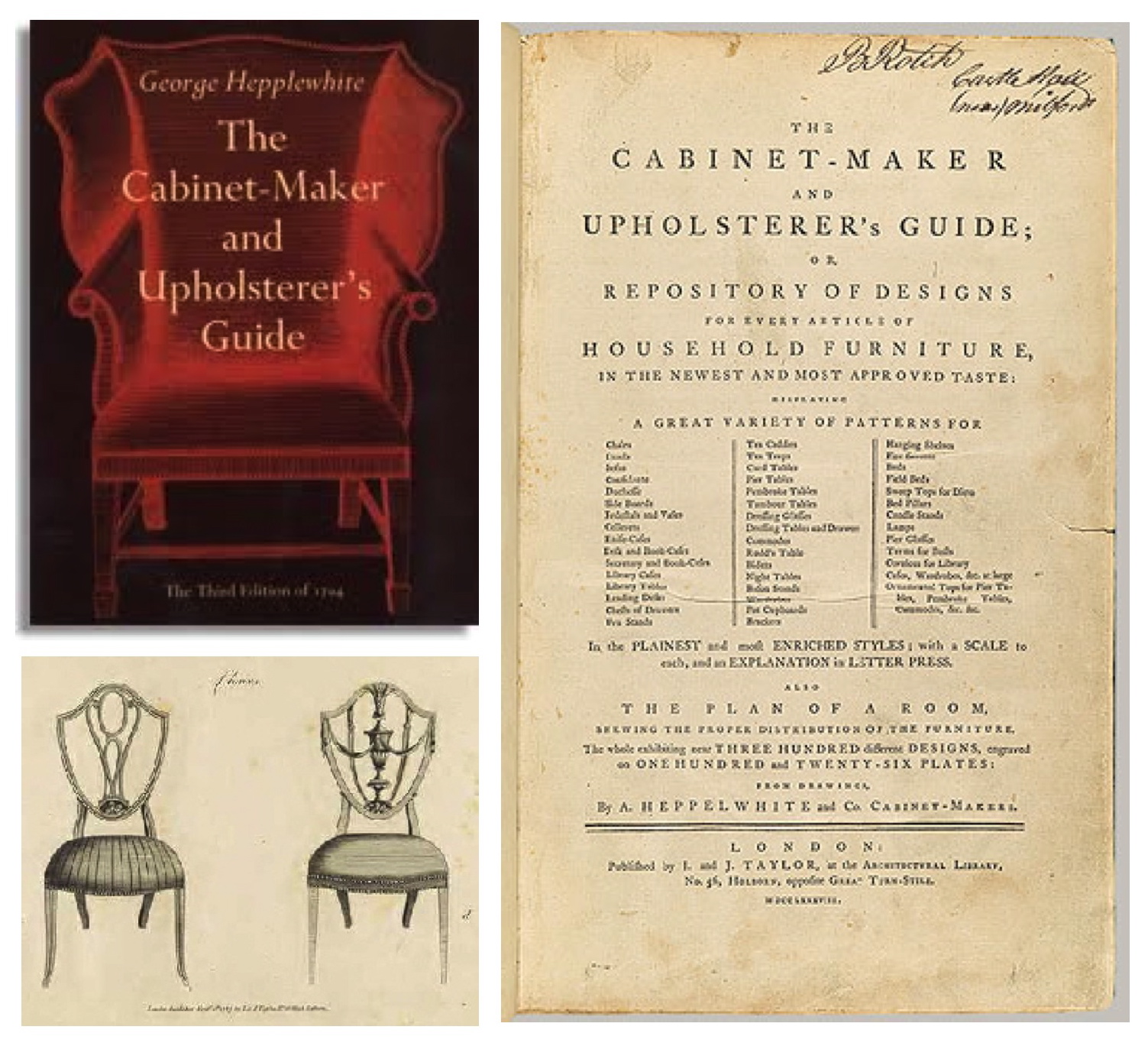
In this compilation one can observe that Hepplewhite, a contemporary of Thomas Chippendale, moved away from the heavy carvings his peer executed and instead produced more delicate, graceful designs. His fondness for curves shows in most of his furniture, lending them a refined and elegant air which became hugely popular in subsequent years.
The French Hepplewhite design, for example, is based on the French “Fauteuil” (or armchair) of the early 18th century. The picture below at Timothy Langston Fine Art & Antiques features a mahogany frame with finely carved cabriole legs and an overall simplicity and symmetry. Further to this it has an overstuffed back and armrests for improved comfort. It is very unusual for chairs of this age to retain their original upholstery and this example has been elegantly reupholstered in a traditional Pelham Check by Colefax and Fowler.
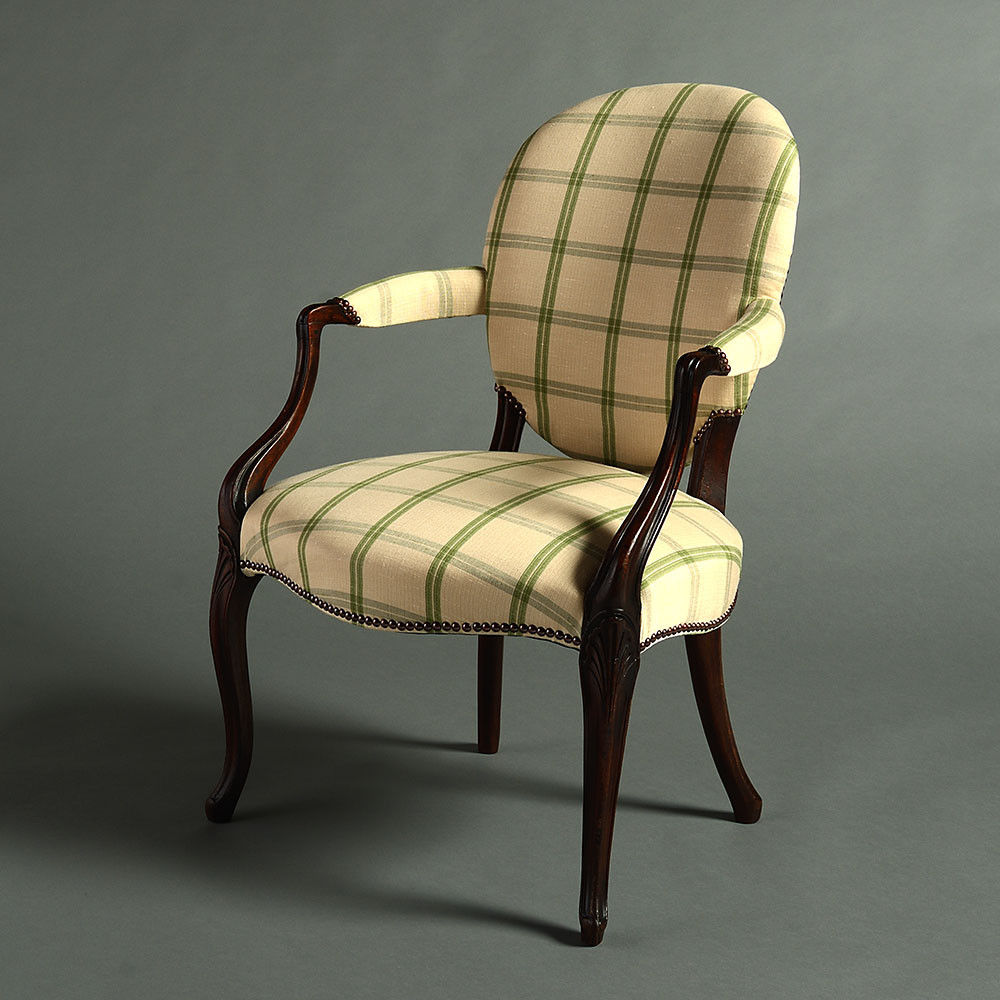
While the The Cabinet-Maker and Upholsterer’s Guide had an enormous impact on cabinetmakers’s designs at the time, its principles have continued to infiltrated centuries to follow and, in fact, are still widely copied today. We at Timothy Langston, however, believe that there is no comparison to having an original, handcrafted piece of history adorn ones home…

